Sony Artisan Renan Ozturk is a film director and photojournalist who does a lot of remote expedition work, especially for National Geographic. “This particular kit was for the assignment in the remote island just above Antarctica where they were making a Disney+ Documentary called ‘Lake of Fire,’ and also on a stills assignment for the Magazine. There is also a Sony Field note about this adventure called ‘Lava Lake’ if you are interested in the process.” Check out more on Lava Lake HERE and keep reading as Ozturk explains the gear he packs for a remote expedition when on assignment.
Product Preview – In This Article You’ll Find:
–Sony Alpha 1
–Sony Alpha 7S III
–Sony 100-400mm f/4.5-5.6 G Master
–Sony 35mm f/1.4 G Master
–Sony 14mm f/1.8 G Master
–Sony 24-70mm f/2.8 G Master II
–Sony 20mm f/1.8 G
–Sony 16-35mm f/2.8 G Master
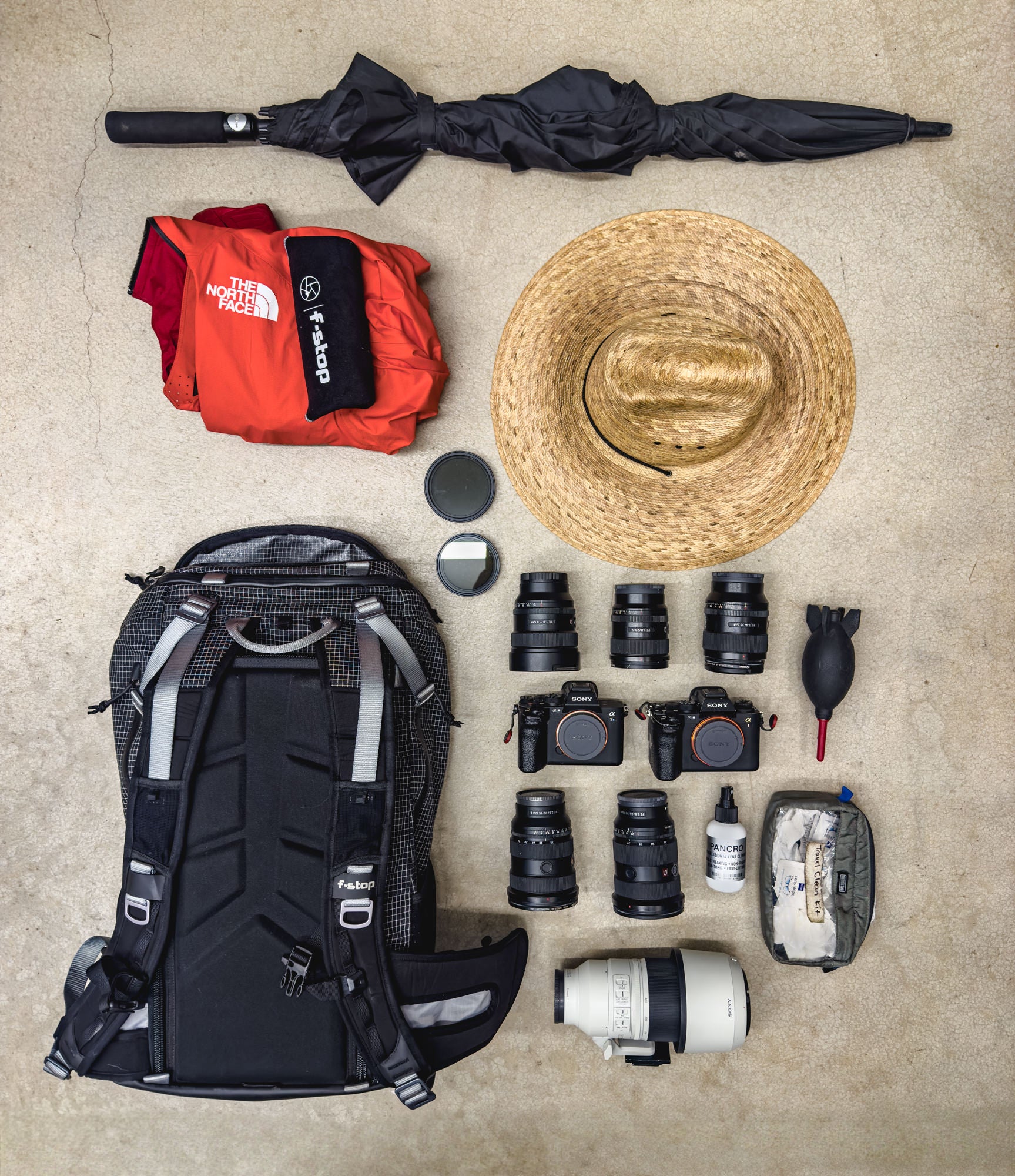
Cameras
Sony Alpha 1: Since I was directing the documentary and shooting stills for the magazine I need a camera that is amazing for stills and also has all the highest end video functions. For me the Sony Alpha 1 has this, since I can shoot 120 fps slow motion still in 10-bit color and the stills will hold incredibly well for anything from the cover shot to a giant billboard promoting the show.
This photo with the Sony Alpha 1 was part of the epic sailing journey to reach the remote island which had an unclimbed volcano with a previously undiscovered lava lake in the crater. Some of the most treacherous seas on earth. I had the camera just in a small splash cover not a full housing which allowed me to move quickly in between these epic waves which buried the bow of the boat.
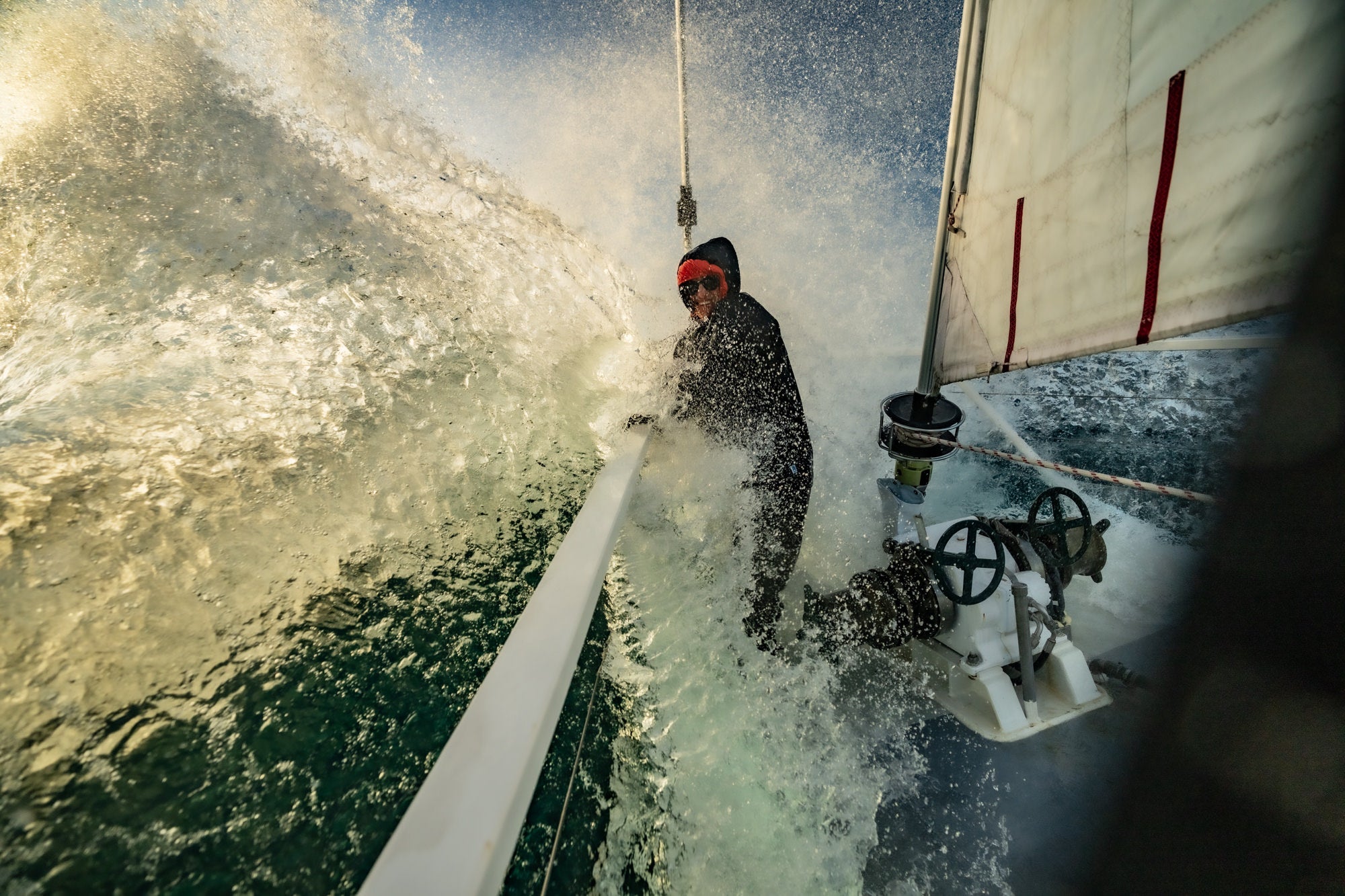
Photo by Renan Ozturk. Sony Alpha 1. Sony 16-35mm f/2.8 G Master. 1/1600-sec., f/3.5, ISO 400
Sony Alpha 7S III: This is still my go-to camera for low-light and dedicated video on these Natgeo assignments. I know the stills will hold up to a double page spread in the magazine but also I will be able to shoot in any light conditions even darker than what my eye can see. I took this as my only camera going to the summit because I knew I wanted to be able to shoot low-light as well as daylight and it withstood insane wet conditions in an acidic volcanic plume of gas that was supposed to destroy any and all electronics!
This photo was taken on the summit push of the first ascent of Mount Michael just before we discovered the rare Lava Lake and were helping volcanologists do critical research on the summit gasses. The rime ice forming on our gear was acidic and ate away at our clothing ropes and gear, but the Sony Alpha 7S III was able to withstand the climb.
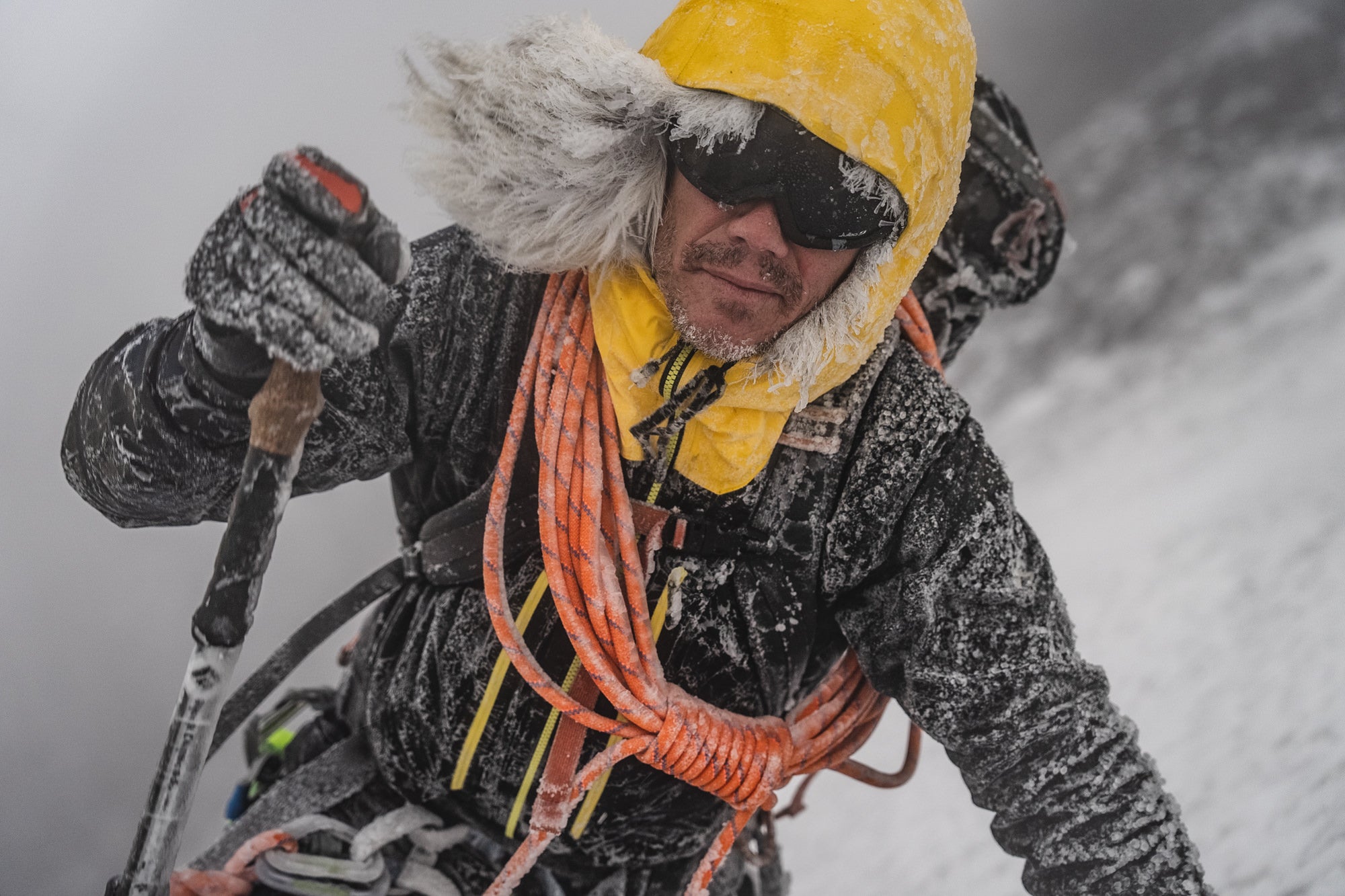
Photo by Renan Ozturk. Sony Alpha 7S III. Sony 24-70mm f/2.8 G Master II. 1/640-sec., f/3.2, ISO 200
Lenses
Sony 100-400mm f/4.5-5.6 G Master: Such a sharp and versatile long lens that always finds a place in my bag because of the long focal length for the weight and size.
This was taken with the Sony 100-400mm f/4.5-5.6 G Master during our two-week ocean crossing to get to the volcano as we passed South Georgia island. This was a go-to lens on the sailboat for picking off landscape and wildlife details with a long lens that wasn’t too heavy to manage in the world’s heaviest seas.

Photo by Renan Ozturk. Sony Alpha 1. Sony 100-400mm f/4.5-5.6 G Master. 1/320-sec., f/7.1, ISO 640
Sony 35mm f/1.4 G Master: This is my all time go-to photo journalism lens that I would take as my single lens if I could only choose one! It lives on my camera and gets everything from portraits to landscapes to astro.
This was just as we arrived at Saunders island and we saw the glow from the lava in the crater at sunset, a tell-tale sign that what the clues for the lava lake were real! Of course I had the Sony 35mm f/1.4 G Master living on my Sony Alpha 1 and was able to pull this shot off hand held in low light on the moving boat because of the fast aperture at 1.4.

Photo by Renan Ozturk. Sony Alpha 1. Sony 35mm f/1.4 G Master. 1/4-sec., f/1.4, ISO 3200
Sony 14mm f/1.8 G Master: I love this lens for low-light astro. There really isn’t a lighter lens that is this wide and this fast at 1.8!
This particular image was a unique execution different from the norm with this lens. We noticed that during our week-long crossing there was a good mix of moon and stars just enough to be able to pull off a night shot on deck, keeping the subject sharp but the ocean and stars moving!
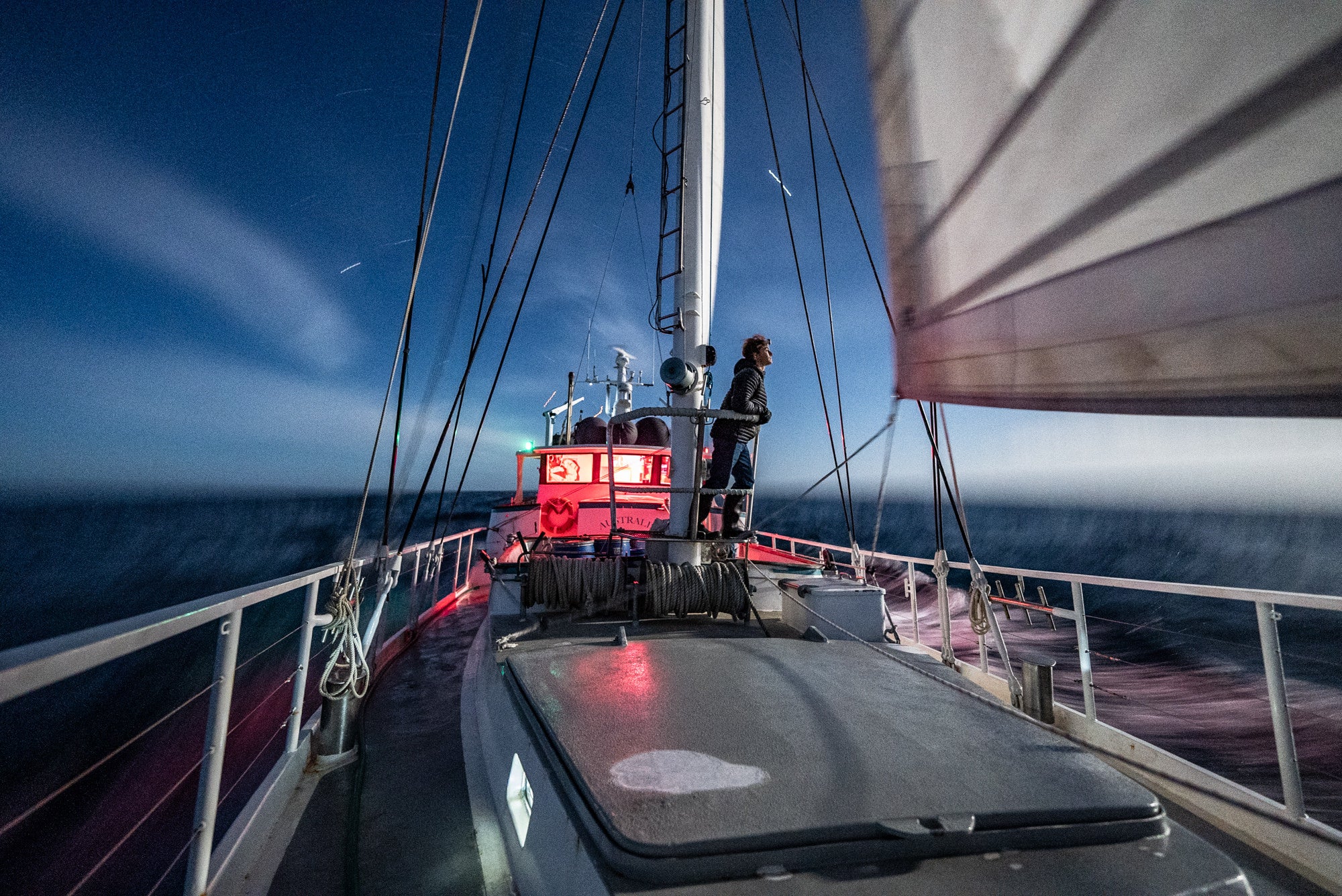
Photo by Renan Ozturk. Sony Alpha 7S III. Sony 14mm f/1.8 G Master. 1/3-sec., f/1.8, ISO 6400
Sony 24-70mm f/2.8 G Master II: When you are literally going for the summit on a life and death first ascent and can only take one lens I’m always choosing between the 24-105mm and this, but I chose this because of the 2.8 aperture and still great focal range!
We are going for the summit of the first ascent of Mt Micheal one of the most remote unclimbed volcanoes in the world in this photo below. After zero visibility we finally had a patch of sun through the sulfuric gas cloud. During the climb I really enjoyed shooting with this lens in the heat of battle on the climb itself.

Photo by Renan Ozturk. Sony Alpha 7S III. Sony 24-70mm f/2.8 G Master II. 1/1250-sec., f/10, ISO 1000
Sony 20mm f/1.8 G: This lens is such a secret killer in the Sony lineup. So small, so light, so sharp. We put this in the bag a lot for its versatility and perfect middle ground in focal length that is really wide but not too distorted.
I got out of the tent solo in the middle of the night for this shot and the 20mm was the choice for a super fast night shot that didn’t seem too distorted. It was perfect for this night shot building snow walls as we tried to survive the 100mph winds.

Photo by Renan Ozturk. Sony Alpha 7R IV. Sony 14mm f/1.8 G Master. 10-sec., f/1.8, ISO 800
Sony 16-35mm f/2.8 G Master: A go-to wide zoom! And my choice for the underwater housing on this Nat Geo assignment. I also use this lens for aerials when I want a wider view or high-angle climbing cinematography when you need a wide zoom.
We got in the freezing water during our stopover in South Georgia island to play with the fur seals and get some much needed time off the boat. The Sony 16-35mm f/2.8 G Master was the perfect focal length for wide shots that still were not too warped on the edges, since Nat Geo editors don’t take kindly to that.
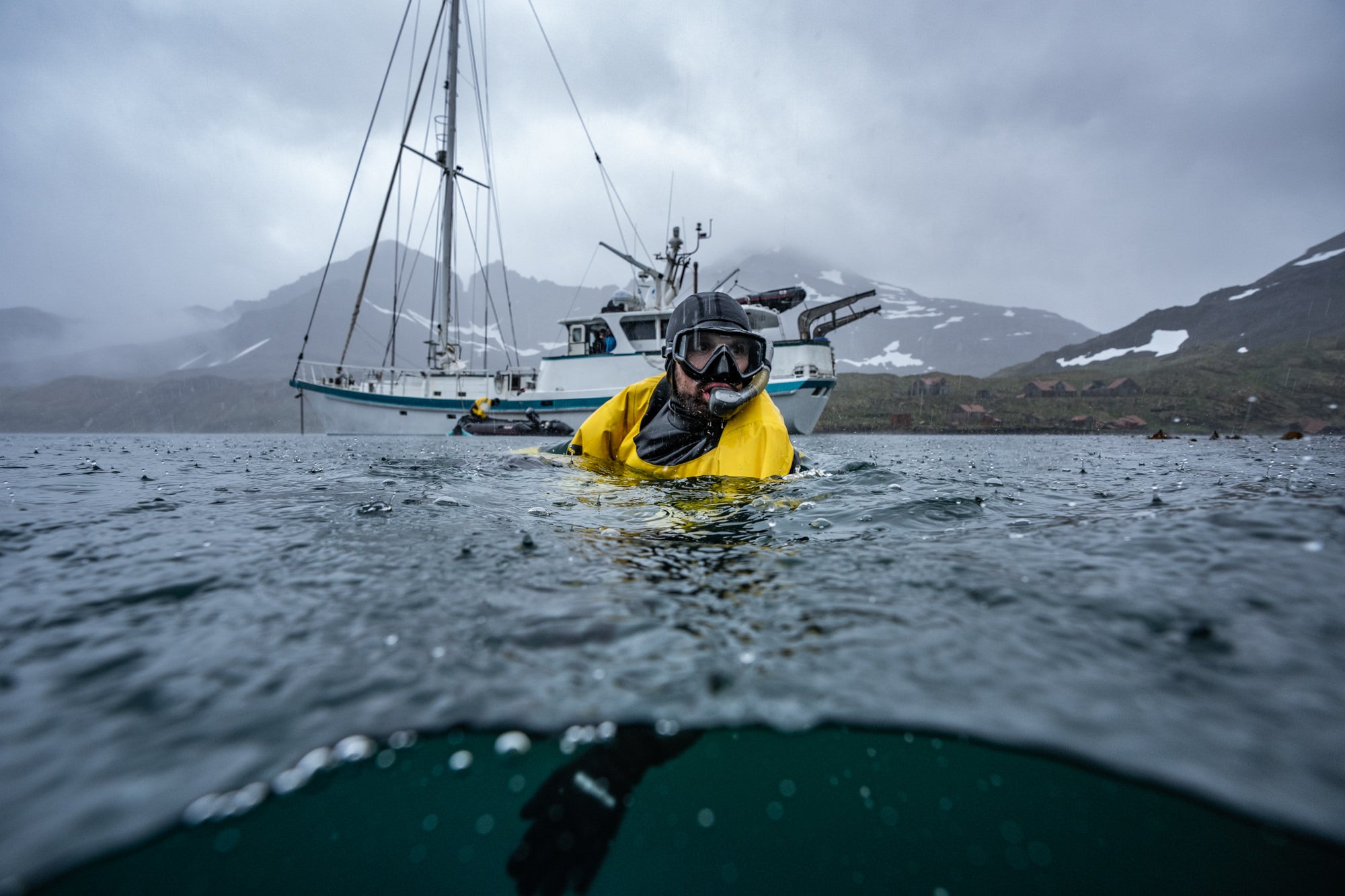
Photo by Renan Ozturk. Sony Alpha 1. Sony 16-35mm f/2.8 G Master. 1/320-sec., f/5.6, ISO 1250
Accessories
Pachro: Time tested best cleaning solution.
Rocket Blaster: Always crucial for sensor and lens cleaning.
Golf Umbrella: The secret weapon. Don’t skimp and get the biggest one you can find and you won’t regret it!
New F-stop Protective Wrap: These are the next gen lens wraps that you have to play with to feel their true power. No velcro and super configurable.
Tiffen Filters: Love this family owned company who makes really high end filters. These 82mm and 72mm vari-ND are crucial to be able to shoot video at the correct shutter speed to make things filmic. There are also Tiffen filters- either UV or CP on all the other lenses except the 154mm.
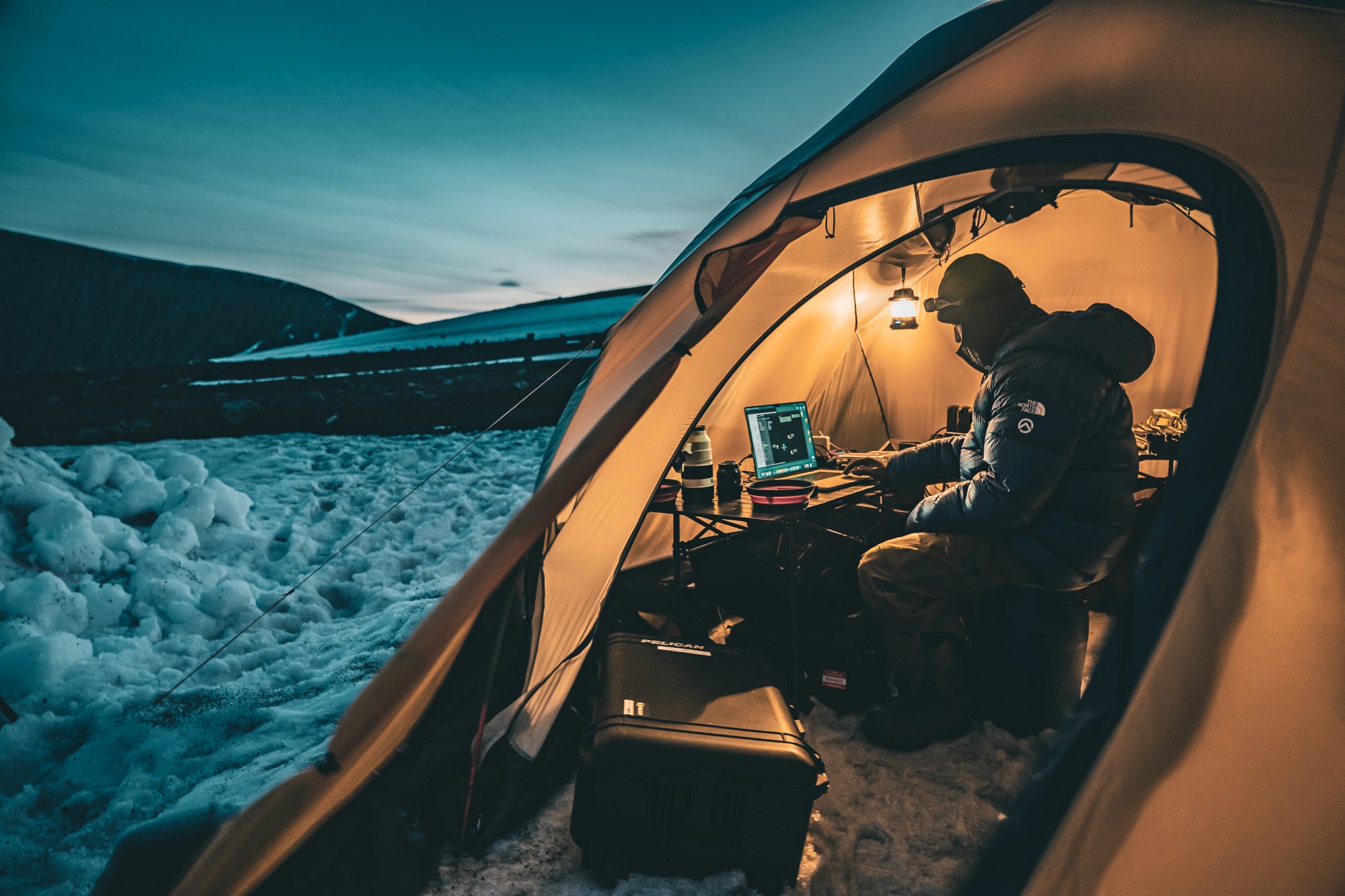
Photo by Renan Ozturk. Sony Alpha 1. Sony 24-70mm f/2.8 G Master II. 1/13-sec., f/2.8, ISO 800
The North Face Shell: I’ve been a TNF athlete for almost 20 years testing this gear and always have a light shell with me for when the shit hits the fan.
Custom Lightweight F-stop Pack: This is a new one I’m testing that is much lighter and still really burly, not sure the name quite yet but I’m sure it will be a classic.
Lifeguard Straw Hat: A bit of a pain to travel with but I never regret it from super hot tropic environments to scorching glaciers when I’m trying to see the screen on my camera and function. The ultimate temp regulator.
See more of Renan Ozturk’s work on his Alpha Universe Profile and on Instagram @renan_ozturk.





















